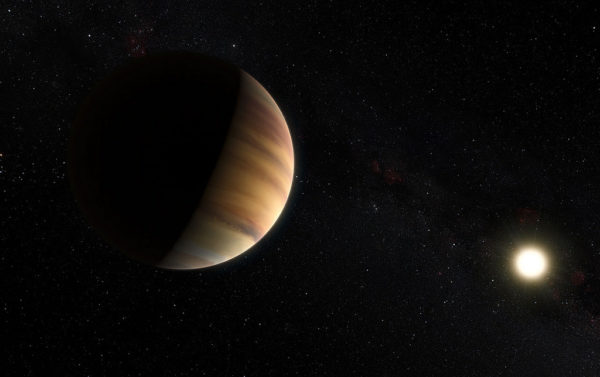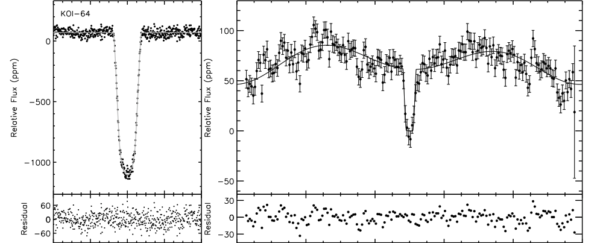"How vast those Orbs must be, and how inconsiderable this Earth, the Theatre upon which all our mighty Designs, all our Navigations, and all our Wars are transacted, is when compared to them. A very fit consideration, and matter of Reflection, for those Kings and Princes who sacrifice the Lives of so many People, only to flatter their Ambition in being Masters of some pitiful corner of this small Spot." -Christiaan Huygens
With the big news about Proxima b and Kepler’s haul of over 3,500 new planets since its launch, the idea that planets orbit stars other than our own is so mainstream that the alternative seems crazy. Yet from the 1950s through the 1990s, the situation couldn’t have been more different. A myriad of claimed detections -- followed by press releases and failed follow-ups -- led to exoplanet studies being considered an illegitimate scientific area of inquiry.
 An artist's impression of the exoplanet 51 Pegasi b, the first exoplanet found around a normal-type star. Image credit: ESO/M. Kornmesser/Nick Risinger (skysurvey.org).
An artist's impression of the exoplanet 51 Pegasi b, the first exoplanet found around a normal-type star. Image credit: ESO/M. Kornmesser/Nick Risinger (skysurvey.org).
Yet the early stories of discovery and the advances in the radial velocity technique not only paved the way for the rich scientific field we have today, that very method is indispensable for exoplanet confirmation. We’ve come so far that today, even the reverse of a transit, where a planet dips behind its parent star, can be detected.
 The main transit (L) and the detection of the exoplanet dipping behind the parent star (R) of the Kepler exoplanet KOI-64. Image credit: Lisa J. Esteves, Ernst J. W. De Mooij and Ray Jayawardhana, via http://arxiv.org/abs/1305.3271.
The main transit (L) and the detection of the exoplanet dipping behind the parent star (R) of the Kepler exoplanet KOI-64. Image credit: Lisa J. Esteves, Ernst J. W. De Mooij and Ray Jayawardhana, via http://arxiv.org/abs/1305.3271.
